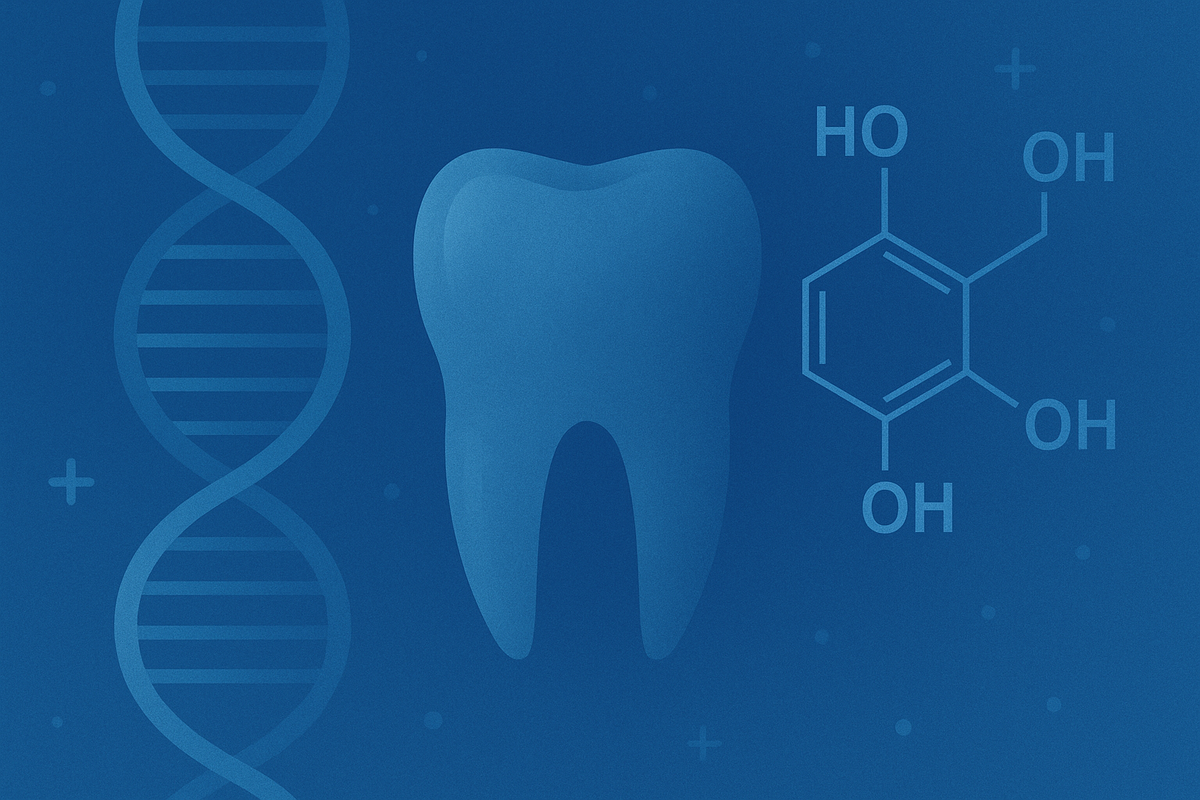Tagatose: A Novel Solution to the Emerging “Ozempic Teeth” Crisis

Over the past two years, GLP-1 receptor agonists, Ozempic, Wegovy, Mounjaro, have reshaped the healthcare landscape. These drugs are not just diet aids; they represent a paradigm shift in obesity management, diabetes care, and even cardiovascular risk reduction. They are, by every measure, blockbuster medicines.
But success has brought with it a new problem. Dentists in the U.S. and Europe are reporting a surge in oral health complications among GLP-1 users. The condition, now widely referred to as “Ozempic teeth,” includes dry mouth, enamel erosion, heightened sensitivity, gum inflammation, cavities, and delayed healing.
The biological mechanism is straightforward. GLP-1 drugs reduce appetite, which lowers salivary stimulation. Saliva is the body’s natural defense system in the mouth: it buffers acids, washes away bacteria, and provides the minerals needed for enamel repair. Without adequate saliva, the oral environment shifts in favor of decay. Traditional responses such as hydration, fluoride, sugar-free gum are only stopgap measures. They cannot fully restore the protective functions that saliva provides. A targeted, science-backed intervention is needed.
Enter Tagatose
Tagatose is a naturally occurring rare sugar that has the potential to fill this gap. Structurally similar to fructose but metabolized differently, it offers sweetness comparable to table sugar with only a third of the calories and virtually no glycemic load. That means it is safe for diabetics and those managing metabolic conditions.
More importantly for oral health, tagatose has been validated as “tooth-friendly.” Unlike conventional sugars, it does not feed the bacteria that cause cavities. Instead, it alters the environment of the mouth itself, changing bacterial behavior, neutralizing acid, and protecting enamel. Dental organizations across the globe have already recognized its non-cariogenic profile. What’s emerging now is the realization that tagatose isn’t just neutral; it is actively therapeutic.
Acid Neutralization & Enamel Protection
The most direct benefit of tagatose lies in its ability to suppress Streptococcus mutans, the bacteria most responsible for cavities. S. mutans thrives in acidic conditions and produces the biofilms that erode enamel. Tagatose interferes with this process on multiple levels.
Clinical trials have shown that subjects consuming tagatose experience statistically significant reductions in S. mutans counts, along with higher salivary pH levels. In other words, tagatose doesn’t just avoid feeding bad bacteria, it makes the oral environment less hospitable to them. Laboratory studies confirm that tagatose reduces biofilm formation, limits insoluble glucan synthesis, and protects enamel surfaces from demineralization.
Even in real-world consumer products, the effect is clear. Chewing gums containing tagatose significantly lowered bacterial counts in saliva, reducing acid levels and protecting teeth. For patients dealing with “Ozempic teeth,” where salivary buffering capacity is already diminished, this neutralization effect could be the missing piece.
Selective Antimicrobial & Prebiotic Action
What makes tagatose even more interesting is its selectivity. Unlike broad-spectrum antimicrobials that wipe out both harmful and beneficial bacteria, tagatose discriminates.
A pivotal 2021 study found that individuals with healthier mouths had naturally higher salivary tagatose levels. In lab experiments, tagatose selectively inhibited pathogenic species like S. mutans and S. gordonii while leaving commensals like S. oralis relatively unaffected. This means tagatose not only defends against decay but also promotes a healthier microbial balance.
In modern medicine, the concept of “microbiome modulation” has become central, whether in the gut, skin, or oral cavity. Tagatose fits squarely into this philosophy. It is a biological scalpel, subtly shaping microbial ecosystems in ways that protect and sustain oral health.
Antioxidant & Functional Benefits
Beyond its antimicrobial role, tagatose brings systemic benefits that make it uniquely suited for GLP-1 patients. Research shows it has antioxidant properties, helping reduce cellular oxidative stress and protecting tissues that are already stressed by reduced saliva and impaired healing.
Its metabolic profile is equally compelling. Tagatose is slowly absorbed, minimally digested, and has a negligible impact on blood glucose or insulin. It also functions as a prebiotic, feeding beneficial gut bacteria and supporting systemic health. For GLP-1 patients, many of whom are managing diabetes or metabolic syndrome, this dual profile is critical.
In effect, tagatose is not only safe for this patient population; it may be especially beneficial. It supports both oral health and systemic metabolic resilience, positioning it as a uniquely appropriate intervention for the very group most at risk.
Clinical Applications: Targeting “Ozempic Teeth”
The science is sound, and the path to application is clear. Tagatose can be formulated into multiple consumer and clinical products:
- Chewing gums and lozenges: By stimulating saliva and delivering tagatose directly into the oral cavity, these products can provide continuous acid neutralization and microbial modulation.
- Mouth rinses and toothpastes: Fortifying standard dental products with tagatose, possibly alongside fluoride and xylitol, would offer daily protection, stabilizing oral pH and strengthening enamel.
- Functional supplements: By combining tagatose with prebiotic fibers, patients could address both oral and gut health simultaneously, particularly valuable for those with GLP-1-related metabolic conditions.
These applications are not futuristic. They are actionable now. The research is strong, the consumer base is expanding rapidly, and the clinical need is immediate.
The Bigger Picture: From Dental Crisis to Market Opportunity
“Ozempic teeth” may sound like a narrow dental problem, but it is emblematic of a much larger story. GLP-1 drugs are scaling into the hundreds of billions in global sales. Tens of millions of patients will be prescribed these therapies in the coming years. As adoption grows, so will the prevalence of oral complications.
That demand creates a market. The opportunity is not just for dentists but for consumer health companies, nutraceutical firms, and biotech innovators. Tagatose is not merely a novel sweetener, it is a platform technology, capable of anchoring entire product lines. Its applications extend from chewing gum to clinical formulations, with crossover appeal to both consumer and medical markets.
Investors and entrepreneurs should take note. The emergence of “Ozempic teeth” is not simply a healthcare challenge. It is a signal that new markets are being created at the intersection of medicine, consumer products, and biotechnology.
A Rare Sugar for a Rare Moment
Tagatose is a scientifically validated solution to a problem growing in step with one of the fastest-scaling drug classes in history. Its ability to neutralize acid, selectively suppress harmful bacteria, reduce oxidative stress, and support systemic health makes it uniquely suited for GLP-1 patients facing oral complications.
The crisis of “Ozempic teeth” is real, but it is also an opportunity. The healthcare system is shifting toward integrated solutions, where metabolic health, oral health, and consumer products converge. Tagatose sits at that intersection.
As with every great market transition, the winners will be those who spot the signal early. Tagatose is an opportunity to solve a growing health crisis and, in doing so, capture an entirely new market.





